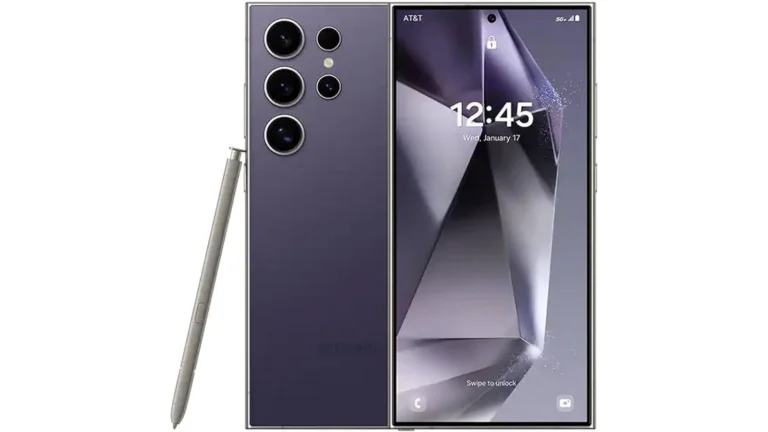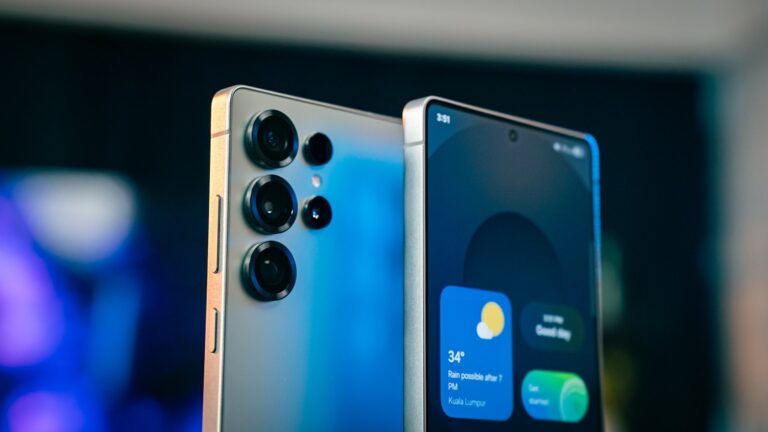
When it comes to iPhones and their processors, there’s a lot to unravel. Each iPhone model comes equipped with a specific processor, designed to optimize its performance and capabilities. Let’s dive right into the processors used in various iPhone models, especially focusing on the latest releases including the iPhone 15 and iPhone 16 series.

What Processor Does Each iPhone Have
| iPhone Model | Processor |
|---|---|
| iPhone 16 Pro Max | A18 Pro |
| iPhone 16 Pro | A18 Pro |
| iPhone 16 Plus | A18 |
| iPhone 16 | A18 |
| iPhone 15 Pro Max | A17 Pro |
| iPhone 15 Pro | A17 Pro |
| iPhone 15 Plus | A16 Bionic |
| iPhone 15 | A16 Bionic |
| iPhone 14 Pro Max | A16 Bionic |
| iPhone 14 Pro | A16 Bionic |
| iPhone 14 Plus | A15 Bionic |
| iPhone 14 | A15 Bionic |
| iPhone SE (3rd generation) | A15 Bionic |
| iPhone 13 Pro Max | A15 Bionic |
| iPhone 13 Pro | A15 Bionic |
| iPhone 13 | A15 Bionic |
| iPhone 13 mini | A15 Bionic |
| iPhone 12 Pro Max | A14 Bionic |
| iPhone 12 Pro | A14 Bionic |
| iPhone 12 | A14 Bionic |
| iPhone 12 mini | A14 Bionic |
| iPhone SE (2nd generation) | A13 Bionic |
| iPhone 11 Pro Max | A13 Bionic |
| iPhone 11 Pro | A13 Bionic |
| iPhone 11 | A13 Bionic |
| iPhone XR | A12 Bionic |
| iPhone XS Max | A12 Bionic |
| iPhone XS | A12 Bionic |
| iPhone X | A11 Bionic |
| iPhone 8 Plus | A11 Bionic |
| iPhone 8 | A11 Bionic |
| iPhone 7 Plus | A10 Fusion |
| iPhone 7 | A10 Fusion |
| iPhone 6s Plus | A9 |
| iPhone 6s | A9 |
| iPhone 6 Plus | A8X |
| iPhone 6 | A8 |
| iPhone 5s | A7 |
| iPhone 5c | A6 |
| iPhone 5 | A6 |
| iPhone 4s | A5 |
| iPhone 4 | A4 |
| iPhone 3GS | S600 |
| iPhone 3G | S5L8900 |
| Original iPhone | 412MHz ARM 1176JZ(F)-S |
Understanding iPhone Processors: More Than Just a Name
The “Pro” Advantage: Unlocking Peak Performance
While all of Apple’s A-series chips are powerful, the “Pro” versions take things up a notch. But what does that mean for you?
- Graphics: Pro chips have beefier GPUs (graphics processing units). This means smoother gameplay in demanding titles, handling higher frame rates and visual effects with ease. Think console-quality gaming on your phone.
- AI: The “Neural Engine” is Apple’s AI brain. Pro chips have more advanced versions, making AI tasks faster and more capable. This includes things like:
- Siri responding quicker and understanding you better
- Photos app identifying faces and scenes more accurately
- Augmented reality apps running smoother and with more realistic effects
So, while a regular A16 chip is no slouch, the A16 Pro in the iPhone 14 Pro models offers that extra oomph for power users and gamers.
Where These Chips Come From: Apple’s Design, Global Manufacturing
It’s easy to think Apple makes everything itself, but chipmaking is a complex process. Here’s the breakdown:
- Apple’s Design: The A-series chips are Apple’s own creations. They design the architecture, the features, everything that makes them unique.
- Global Manufacturing: Companies like TSMC (Taiwan Semiconductor Manufacturing Company) actually produce the physical chips. They have the advanced factories and expertise to turn Apple’s designs into reality.
This is why you’ll hear about “nanometer processes” (like 5nm or 3nm). Those refer to the size of the transistors on the chip. Smaller is better – it means more transistors packed in, leading to better performance and power efficiency.
How Long Will My iPhone Stay Updated? Chip Longevity Matters
When buying a new iPhone, or even considering an older one, it’s not just about the now. It’s about how long it’ll stay supported with new iOS versions. Here’s the good news:
- 5-6 Years of Updates: Apple typically provides software updates for its A-series chips for around 5-6 years. This means security fixes, new features, and compatibility with the latest apps.
- Future-Proofing: So, that iPhone 15 with the A16 chip? It’s likely to keep getting updates into the 2030s! This is a big advantage of iPhones compared to many Android phones.
Table: iPhone Processors and Their Impact
| Chip | iPhones | Key Features/Improvements |
|---|---|---|
| A14 Bionic | iPhone 12 series | First 5nm chip, improved performance and efficiency |
| A15 Bionic | iPhone 13 series, iPhone 14, iPhone 14 Plus, iPhone SE (3rd gen) | Even more efficient, faster graphics, enhanced AI |
| A16 Bionic | iPhone 14 Pro series, iPhone 15, iPhone 15 Plus | New display engine (enabled always-on display), further performance and efficiency gains |
| A17 Pro Bionic | iPhone 15 Pro series | First 3nm chip, dedicated AV1 decoder for video streaming, major leap in performance and efficiency |
| A18 Bionic | iPhone 16, iPhone 16 Plus | 3nm process, refined performance and efficiency compared to A17 |
| A18 Pro Bionic | iPhone 16 Pro series | Even more powerful GPU and Neural Engine, optimized for demanding tasks and AI |
iPhone Processors: An Overview
iPhone 12 Processor
The iPhone 12 and 12 Mini are powered by the A14 Bionic chip. This chip also has a 6-core CPU, split into 2 performance cores and 4 efficiency cores, and operates at a speed of 3.0 GHz.
iPhone 13 Processor
The iPhone 13 series predominantly uses the A15 Bionic chip. This powerful processor features a 6-core CPU, which includes 2 performance cores and 4 efficiency cores. Additionally, it boasts a 5-core GPU and a 16-core Neural Engine, which significantly enhances its machine learning capabilities.
iPhone 14 Processor
The iPhone 14 uses two different processors, which can be a bit confusing. The iPhone 14 and iPhone 14 Plus use the A15 Bionic chip, which was first introduced in the iPhone 13 series. This chip still offers great performance, but it’s not the absolute latest. On the other hand, the iPhone 14 Pro and iPhone 14 Pro Max got an upgrade with the A16 Bionic chip. This newer chip boasts improvements in speed, efficiency, and graphics processing, making it a more powerful option for demanding tasks and games. So, while the entire iPhone 14 lineup delivers a smooth user experience, the Pro models have a slight edge in processing power thanks to the A16 chip.
iPhone 15 Processor
The iPhone 15 and iPhone 15 Plus are both equipped with the A16 Bionic chip, representing a significant leap in efficiency and performance tailored to the needs of the iPhone 15 series. The iPhone 15 Pro and iPhone 15 Pro Max are equipped with the A17 Pro Bionic chip, setting a new standard in the industry as the first widely available 3-nanometer chip. This chip contains an astonishing 19 billion transistors and incorporates a 6-core CPU, promising unparalleled performance and efficiency.
iPhone 16 Processor

The iPhone 16 series introduces a new generation of Apple’s custom silicon, with two distinct processors powering the lineup. The standard iPhone 16 and 16 Plus feature the A18 Bionic chip, a powerful processor built on a 3-nanometer process, delivering enhanced performance and efficiency compared to its predecessors. However, the iPhone 16 Pro and Pro Max take a step further with the A18 Pro Bionic chip. This “Pro” variant boasts even greater performance capabilities, particularly in graphics processing and AI tasks, thanks to its more advanced architecture and higher clock speeds. While both chips offer impressive advancements, the A18 Pro in the Pro models provides an extra edge for users demanding the utmost power and responsiveness from their iPhones.

Processor Evolution and Impact
The evolution of processors in iPhones is not just a tale of increasing numbers. Each new processor brings with it enhanced capabilities, ranging from better energy efficiency to improved graphics and AI processing. These advancements directly impact the user experience, allowing for smoother operation, more complex tasks, and greater overall device longevity.
FAQs
What processor does the iPhone 16 series use?
The iPhone 16 series uses the A18 Bionic chip. This chip is designed by Apple and is built on a 3-nanometer process, making it more powerful and efficient than its predecessors.
What processor does the iPhone 13 use? / What chip is the iPhone 13 using?
The iPhone 13 uses the A15 Bionic chip. This chip was a significant upgrade from the A14 in the iPhone 12 series, offering improved performance and efficiency.
Which chip powers the iPhone 12 and 12 Mini?
The iPhone 12 and 12 Mini are powered by the A14 Bionic chip. This was the first iPhone chip built on a 5-nanometer process, offering improved performance and power efficiency.
What’s special about the iPhone 15’s processor?
The iPhone 15 uses the A16 Bionic chip, which was first introduced in the iPhone 14 Pro models. It offers a notable performance boost over the A15 chip found in the iPhone 13.
How to find out what chip my iPhone uses?
To find out what chip your iPhone uses, go to Settings > General > About > Model Name. Then, you can search online for the specifications of that specific iPhone model.
Which iPhones have the A15 chip?
The A15 chip is found in the following iPhone models:
- iPhone 13 mini
- iPhone 13
- iPhone 13 Pro
- iPhone 13 Pro Max
- iPhone 14
- iPhone 14 Plus
- iPhone SE (3rd generation)
Which iPhone has bionic chip? / What is a bionic chip?
All iPhones starting with the iPhone 8 (released in 2017) use Apple’s “Bionic” series of chips. These chips are designed by Apple and manufactured by companies like TSMC. They are known for their performance and efficiency.
What’s the difference between Apple Bionic vs pro?
Apple’s “Pro” Bionic chips, like the A16 Pro and A17 Pro, generally have more powerful GPUs (graphics processing units) and more advanced Neural Engines for AI tasks compared to the standard Bionic chips.
How is the iPhone 15 Pro’s processor different from the iPhone 15’s?
The iPhone 15 Pro uses the A17 Pro Bionic chip, while the iPhone 15 uses the A16 Bionic chip. The A17 Pro is built on a more advanced 3-nanometer process, offering even better performance and efficiency.
What improvements do new processors bring to iPhones?
New processors in iPhones bring a range of improvements, including:
- Faster performance: Apps launch quicker, games run smoother, and the overall user experience is more responsive.
- Improved efficiency: Better power management leads to longer battery life.
- Enhanced graphics: More powerful GPUs allow for more detailed and immersive gaming experiences.
- Advanced AI processing: Improved Neural Engines enable faster and more capable AI features, such as image recognition and natural language processing.
Can the processor affect the battery life of an iPhone?
Yes, the processor plays a crucial role in battery life. More efficient processors use less power, allowing your iPhone to last longer on a single charge.
Are iPhone processors made by Apple?
While Apple designs its iPhone processors, they are typically manufactured by companies like TSMC (Taiwan Semiconductor Manufacturing Company).
Does the processor affect the iPhone’s ability to handle AI tasks?
Absolutely. The Neural Engine within Apple’s Bionic chips is dedicated to handling AI tasks like Siri voice recognition, image processing, and machine learning. More powerful processors generally offer better AI performance.
Will the iPhone 15 series’ processors support future iOS updates?
Yes, Apple’s processors are designed to support new iOS updates for several years, ensuring your iPhone 15 remains compatible with the latest features and security enhancements.






